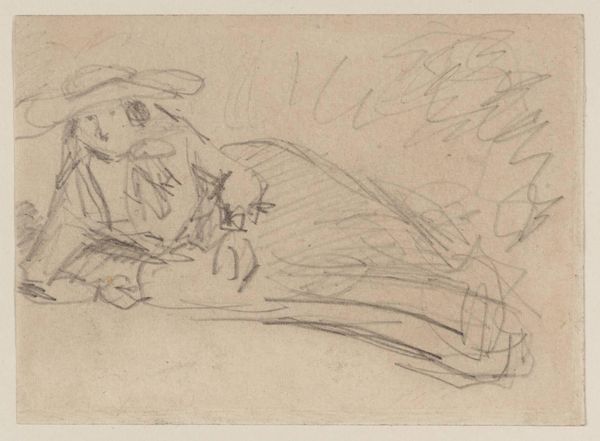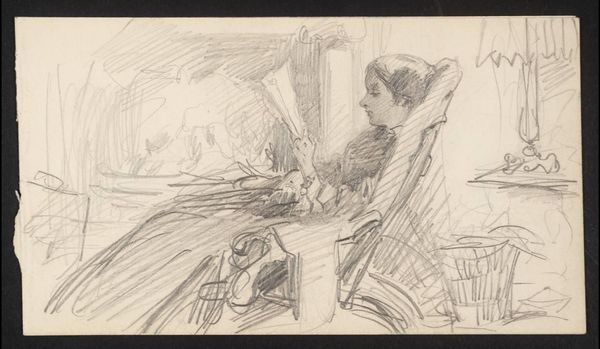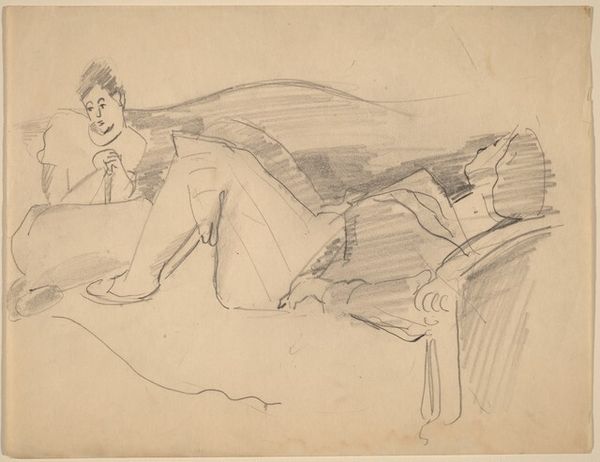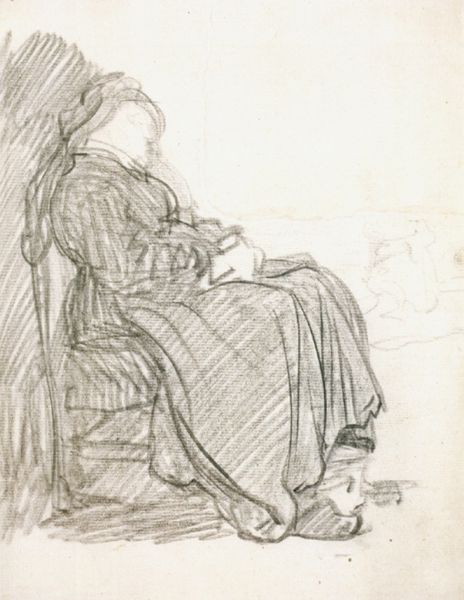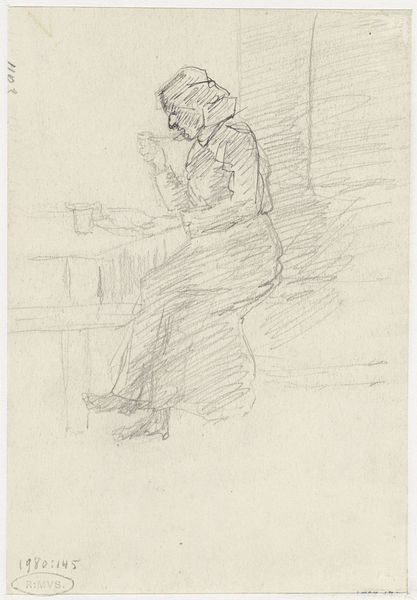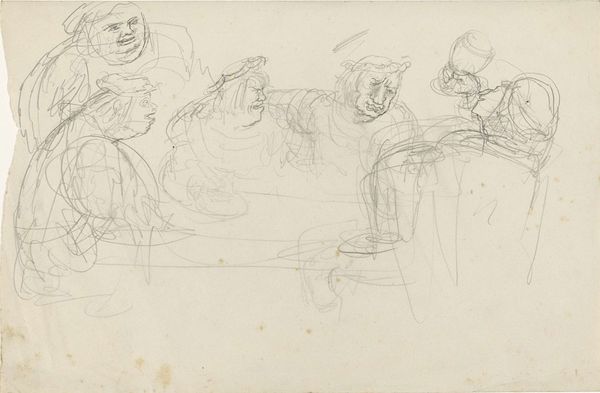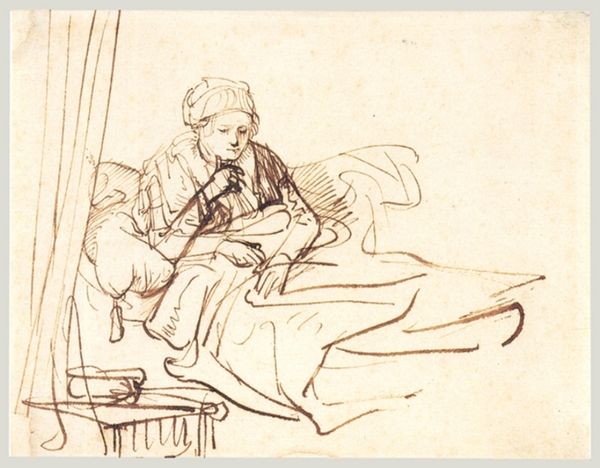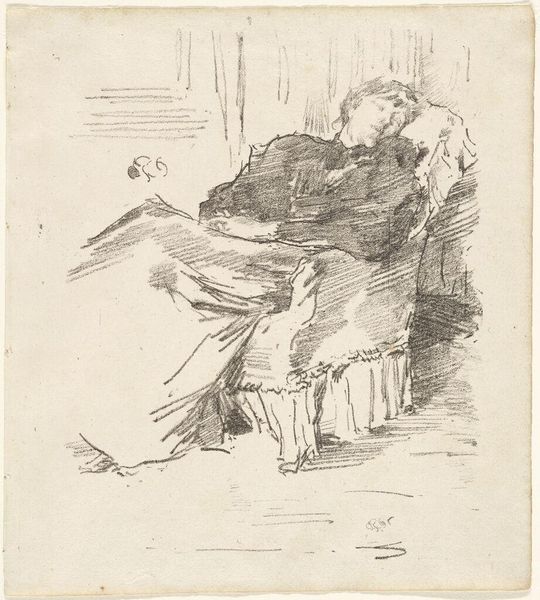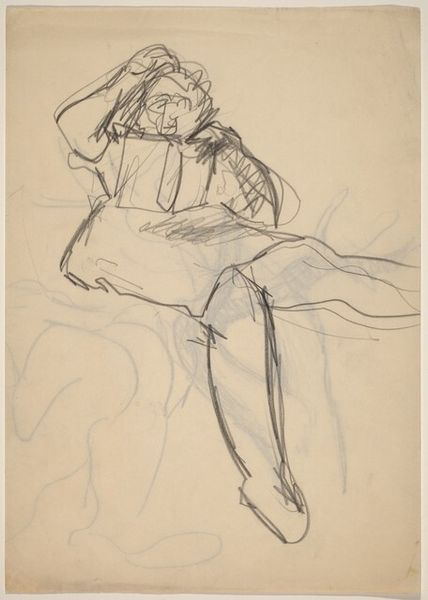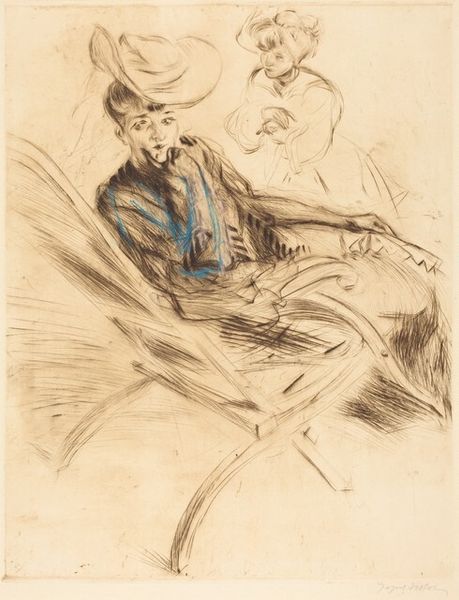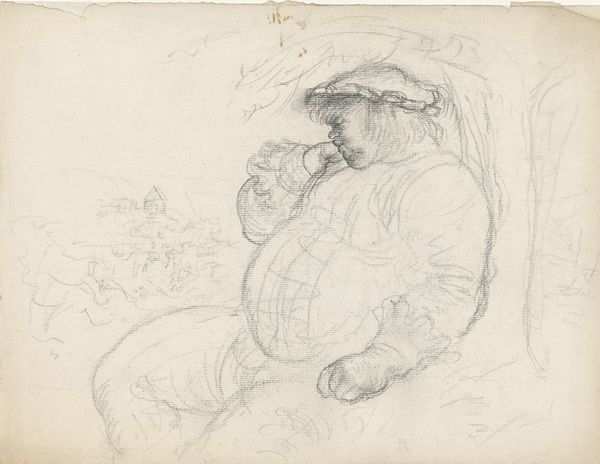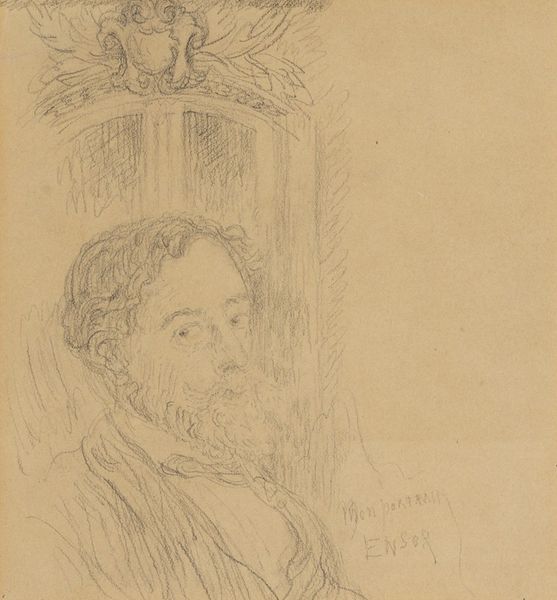
#
amateur sketch
#
toned paper
#
light pencil work
#
pencil sketch
#
incomplete sketchy
#
personal sketchbook
#
sketch
#
sketchbook drawing
#
portrait drawing
#
watercolour illustration
#
sitting
#
initial sketch
Copyright: Public domain
Curator: What do you make of this drawing? I see a woman, possibly middle-aged, napping quite peacefully, rendered in a delicate pencil sketch. She’s surrounded, though, by what can only be described as... well, unsettling creatures. Editor: It gives me the shivers, to be honest. It is such an uncanny juxtaposition of vulnerability and grotesque imagery. The woman is completely at ease, oblivious, and these… figures leer from the background. It almost feels like a manifestation of societal anxieties about aging women—their bodies becoming objects of fear and mockery. Curator: That’s a fascinating reading! James Ensor created this piece, titled "My Aunt Asleep Dreaming of Monsters," around 1890. And thinking of dreams... Perhaps these figures represent her subconscious fears, bubbling to the surface? A more playful, personal nightmare, maybe? Editor: Maybe, but Ensor was working in a period of profound social change. The role of women, particularly older women, was being renegotiated. The background masks seem to me like caricatures – grotesque stereotypes applied to those who exist outside dominant patriarchal narratives. What if this is less about the aunt’s internal life, and more about her position in a society that both relies on and demonizes her labor? Curator: I do wonder. Look how lovingly the aunt is depicted. See the subtle lines of her dress, the weight of her closed eyelids, the serenity etched into her face. She's at the center. The monsters feel almost secondary, as though they exist to emphasize her peaceful state. The lightness of touch adds a layer of surreal humor—like a visual pun on the expression ‘sleeping like the dead.’ Editor: I grant you that—there is something tender in the way Ensor sketched his aunt. The background forms also draw from the world of theatre. Ensor came from a very particular Belgian community filled with working-class theatrical performers. This gives a strange class-consciousness to the piece in thinking of the masks of stock characters and morality plays that formed Ensor's visual language in staging the human drama. I'm intrigued by your emphasis on ‘peace’ because I would read this as quiet dread. Curator: Well, the beauty of art, isn't it, to see wildly different reflections looking back at us? Ensor invites, dares even, us to question the boundaries between our inner thoughts and our external realities, and leaves space for both peaceful repose and lurking monsters. Editor: Yes, precisely. Perhaps we are both inside the dream and haunted by the same monsters. And this piece shows the possibility for each.
Comments
No comments
Be the first to comment and join the conversation on the ultimate creative platform.
